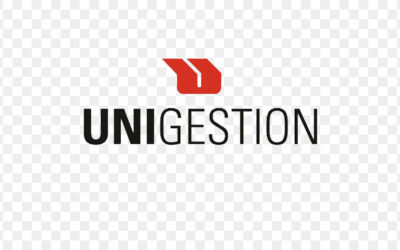Private equity firms can play an essential role in our economic recovery, but are they ready to come off the sidelines? Jason Menghi of Deloitte looks at the capabilities and opportunities for private equity to put roughly $1.5 trillion to work.
The Covid-19 crisis has wreaked havoc on the economy; in a matter of weeks, once-safe assumptions about the markets have been upended, placing severe pressure on businesses across all sectors. We will likely feel the impact of the damage this pandemic has caused to global markets for months to come.
In time, it is hoped the virus will be addressed and normal economic life can be restored. But by whom? Many companies are now struggling with liquidity or funding issues, despite billions of dollars in government stimulus, and few entities have the kind of dollars—and appetite—to help restart company growth, make vital investments, rehire workers, and restructure debt.
Enter private equity firms. Although the industry is perhaps best known for buy outs—and the political fire such deals inspire—these shops can have the unique skills, experience, and risk appetite to invest when others do not, and can create far more value than others through their work during challenging economic times.
Leading private equity firms are already envisioning a post-Covid outcome; what’s more, they have roughly $1.5 trillion of dry powder at their disposal to support existing portfolio companies, invest in newly distressed firms, and pursue other growth and value-creating strategies.
And yet, much uncertainty remains on where and how to invest. Are private equity firms ready to jump off the sidelines?
Navigating uncertainty
Many firms waited on the sidelines during the 2007-2008 recession, resulting in missed investment opportunities created by the crisis. Investors are eager to capitalize on the current window of opportunity to avoid repeating history; however, significant uncertainty and the potential for further economic fallout persists and could confuse when and how much capital to deploy.
Opportunities abound right now, but many funds are not rushing to capture them. With competition from other investors absent, private equity firms can afford to take their time and be selective in how they activate dry powder. Many are waiting for better assessments regarding the virus’s impact on earnings and progress toward containment or seeing if the market will test new lows. Others are focusing on triaging existing portfolio companies by dusting off relationships, restarting conversations, and revisiting deals that were only recently unaffordable. Some are trying to get a pulse on the wholesale transformation opportunities Covid-19 could trigger in select industries and capitalize on the benefits of taking a leading role in shaping the world’s next normal.
In addition, private equity firms are continuing to navigate the opportunities and uncertainties around environmental, social, and governance (ESG) investments. While some stakeholders were wary of the impact Covid-19 would have on investor appetite for ESG, the pandemic has actually magnified the importance of integrating these considerations into investment strategies, as companies prioritize the health and safety of their employees, customers, and communities. Incorporating ESG across investment portfolios may open access to capital, but to unlock it, private equity firms should be aware of the challenges influencing the success of such initiatives.
How will uncertainties resulting from Covid-19 impact how private equity firms identify and manage ESG risks? How will portfolio or target companies continue tracking and publishing accurate ESG data amidst the many other financial priorities they have right now? Private equity firms will likely have to understand these and other factors to optimize the unique ESG portfolio opportunities offered in the market at this time.
Regardless of where efforts are concentrated, the types of returns investors can expect to capture will likely depend on their ability to time investments well and act effectively in the next 6-18 months. Outside of taking growth equity positions, firms may find that some public companies are more amenable to going private, open to minority cash infusions (so-called PIPE transactions), or eager to shed non-core assets.
Assessing capital commitments
The size and timing of capital commitments can be hurdles for some private equity firms and may impact when and to what extent they can take advantage of opportunities in today’s market, especially for those wary of the long-term lockups required by private equity. Funds that have yet to collect on secured capital commitments and that were looking to fundraise now or were planning to exit portfolio companies this year will likely be the most challenged in the current environment due to near-term capital constraints. Funds that were planning exits through IPOs in the coming year may encounter more significant challenges, as financial market volatility has led many companies to reconsider timing.
Meanwhile, funds that completed fundraising before the outbreak have more flexibility to deploy capital now, potentially affording them an advantage in pursuing market opportunities, should they choose to act on them.
Shoring up operational capabilities
Even for firms unburdened by capital commitments, other challenges may remain in deploying capital. Not all private equity shops’ operational capabilities are created equal. Some will find that they do not have the resources or specialized expertise to evaluate all investment opportunities in today’s market environment, including tax implications of debt financing strategies, accessibility of federal bailout packages, identifying new deal targets in light of lower valuations, and more. Failing to account for special situations, such as modifications to debt terms, can trigger significant tax implications later if not correctly structured.
Funds will likely also need to multitask to evaluate a higher volume of opportunities at a faster pace, and to do this, some are creating dedicated ‘taskforce’ teams. These could include dedicated teams helping portfolio companies through the crisis, developing debt-financing strategies (e.g., evaluating federal bailout packages), and restarting conversations with deal targets.
Ultimately, much depends on how private equity firms approach the coming tsunami of challenges and opportunities. In fact, the competitive landscape in private equity could be reshaped by this moment: those who recognize the potential opportunities—and act on them efficiently and strategically—may be able to leapfrog those who merely retrench and wait for calmer waters.
Source: Bloomberg
By Jason Menghi




